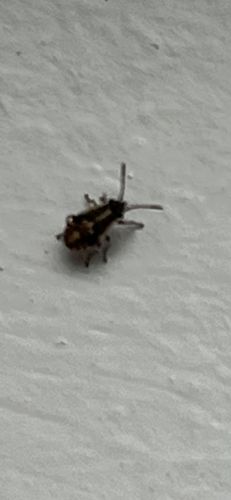Booklouse
Scientific Name: Psocoptera
Order & Family: Psocoptera (Order)
Size: Typically 1-2 mm, though some species can be up to 10 mm. The one in the image appears to be on the smaller end of this range.

Natural Habitat
Damp, warm, and humid environments, often found in books (feeding on mold), paper, stored food products, and sometimes in new homes due to moisture in building materials. They are also common outdoors under bark or leaf litter.
Diet & Feeding
They feed on fungi, mold, starches, glues, and other organic matter. In homes, they will consume food items, book bindings, and wallpaper paste that contain starch.
Behavior Patterns
Booklice are non-social insects that tend to be found in aggregations when conditions are favorable. They are generally harmless to humans, though large populations can be a nuisance. They prefer concealed, undisturbed areas. They reproduce quickly in suitable conditions, often through parthenogenesis (females can reproduce without males), which means a single female can quickly establish a population.
Risks & Benefits
Potential risks include damage to paper products (books, documents), stored food contamination, and being an allergen to some sensitive individuals if populations are very high. They do not bite humans or pets and are not known to transmit diseases. Benefits are minimal in domestic settings, but in nature, they play a role in breaking down organic matter, especially fungi and lichens.
Identified on: 9/6/2025